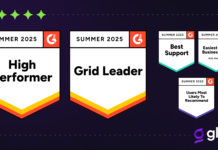You want to do right by your policyholders and agents. That’s why you got into this business—to help people when it matters most. But these days, it feels like you’re being pulled in two directions.
Your service teams are under pressure to be faster, more efficient, more cost-effective. You’ve added chat, chatbots, self-service tools—everything that should make things easier. But workloads aren’t shrinking. The calls keep coming. Customers are getting bounced from one channel to another. By the time they finally reach a rep, they’re exhausted. And your reps? They’re drowning.
Meanwhile, independent agents are losing patience. They’re logged into your carrier portal, ready to place business, but instead of getting quick underwriting guidance, they’re stuck waiting on hold. Every minute spent chasing down answers drives up their frustration—and leaves them wondering whether another insurer could make their lives easier.
Here’s the hardest part: You’ve already tried to fix these problems by adding new channels and communication tools to your contact center, website, and app. So why does it feel like connecting with policyholders, agents, and reps is more complicated than ever?
The answer is wrapped up in one simple truth.
Customers Don’t Care About Channels—They Just Want Help
When a policyholder reaches out, they’re not thinking about what channel they’re using. They’re in the middle of their day, juggling a million other things, and now they have to figure out how to reset their password or check the status of a claim. They just want a straight answer—fast.
For some policyholders, it’s even more urgent. Someone’s car has been stolen. A home has been flooded. These policyholders don’t have time to think about whether they should call your contact center or chat on your website—they just want help. And yet, what do they get? Chatbots that can’t understand them, 15-minute queues on your phone lines, and reps that pass them from department to department in search of answers.
Insurance agents deal with the same frustrations. They need carrier support to be quick, clear, and helpful. They don’t have time to waste figuring out how to navigate your phone IVR or your chatbot menu options—they just want you to solve their problems. If getting an answer takes too long, they may move their business elsewhere.
That’s why it’s not just about offering a variety of channels and communication tools. It’s about creating a strategy to seamlessly guide policyholders and agents to the right channel at the right time, so they can quickly get answers—and get back to their lives.
When to Use Voice, Digital, and AI in Insurance Customer Service
The idea of using the right channel at the right time seems simple enough. But how do you actually create a channel strategy that creates seamless customer journeys for your policyholders, agents, and reps?
Leading people from confusion to clarity requires you to take three steps:
- Match your channels to the complexity of each issue. Some issues can be automated. Others require a human touch. Knowing the difference is critical.
- Ensure your AI and digital tools actually work. Customers will use chat and AI in insurance self-service—but only if those tools actually solve their problems without making them work harder.
- Allow people to move fluidly between channels. If a customer starts in chat but needs voice support, they should be able to continue the conversation without re-explaining their problem.
Here’s how you can follow through on all three of these steps.
Step 1: Match channels to issue complexity.
With so many different inquiries coming in throughout the day, whether via chat, phone, email, or some combination of the three, how do you know when and where to best assist customers?
Here’s the good news: 80% of insurance inquiries fall into just 15–20 interaction types—categories like claim status updates, billing questions, coverage details, and more. If you can match common interaction types to the right channel, your bots or reps won’t have to figure out the best way to help them on the fly.
Some issues are simple. A policyholder checking their claim status doesn’t need to wait in a phone queue—they need a fast, clear answer via chat or self-service. An agent asking about a recent submission doesn’t need to send an email and wait for a response—they need instant digital support.
Other issues are more complex. A first notice of loss (FNOL) isn’t just about submitting information—it’s an emotional moment. A customer in distress needs a human, not a bot. And if an agent is dealing with an underwriting challenge, they don’t need to be bounced from one department to another—they need real-time collaboration with the right expert.
Step 2: Ensure your AI and digital tools actually work.
AI and automation can make insurers more efficient—but only when they’re used the right way. The best AI doesn’t replace human reps—it amplifies their ability to help.
AI-powered routing can detect urgency and frustration, ensuring that customers and agents get where they need to be without unnecessary delays. A chatbot can handle simple tasks but shouldn’t trap people in automated loops—it should know when to escalate. AI-driven call summaries can save reps time, so they spend less time on documentation and more time actually helping people.
When automation is done right, efficiency doesn’t come at the cost of connection. Instead, it frees up service reps and underwriters to focus on the interactions that matter most.
Step 3: Allow people to move fluidly between channels.
For too many insurers, service channels exist in silos. Chatbots can answer basic questions but can’t escalate smoothly to a human for more complex issues. Phone reps don’t have access to digital tools like CoBrowsing or Screen-Sharing, so they can’t actually see what your policyholders or agents are looking at on your website or app. Chat records are not shared with contact center reps, so callers have to re-state their problem when they switch from a bot to a human.
The main culprit for this problem: Omnichannel platforms. While omnichannel was originally designed to offer seamless interactions, it actually just bundles siloed channels onto one platform. In other words, the channels still don’t actually talk to each other, so customers have to start from square one every time they switch from chat to voice, or from virtual assistant to human, or from one rep to the next.
Fortunately, there’s a better way to get customers to the right channel at the right time: ChannelLess® architecture. This approach combines voice, chat, digital tools, and AI on one platform, built together from the ground up—not bolted together after the fact, like omnichannel. As a result, your reps use one platform for every interaction, and policyholders and agents can easily move from one channel to the next without losing context or restarting the conversation.
Building an interaction strategy using ChannelLess architecture, AI, and digital tools may sound good on paper. But how can it actually deliver results for your insurance agency?
Case Study: The Power of Seamless AI in Insurance
A regional insurance carrier faced a growing problem: call volumes were rising, self-service adoption was low, and both customers and agents were getting stuck in a tangled web of channels. Instead of solving problems, its service teams were overwhelmed with avoidable calls.
By implementing ChannelLess® architecture and AI-powered routing, the insurance carrier was able to guide customers to different channels based on the complexity of their inquiries. Policyholders with straightforward questions were guided to effective self-service options, while more urgent cases were immediately escalated to live agents. CoBrowsing and video chat enabled agents to provide real-time support without forcing policyholders to call in. AI-generated call summaries cut agent documentation time in half, allowing them to focus on higher-value interactions.
- Customer satisfaction increased by 18%.
- Call volume dropped by 25% as self-service adoption improved.
- Agent productivity surged, reducing staffing costs by 10%.
By guiding people to the right help at the right time, the insurance agency didn’t just make life easier for policyholders, reps, and agents—it drove measurable results that boosted its bottom line.
Create Your Insurance Interactions Roadmap
It’s time to take the wheel and guide your customers to the right channel at the right time. We’re here to help you lead the way. Request a demo now to see how your insurance company can use Glia’s ChannelLess® architecture and AI-powered digital tools to create a smarter channel strategy.





